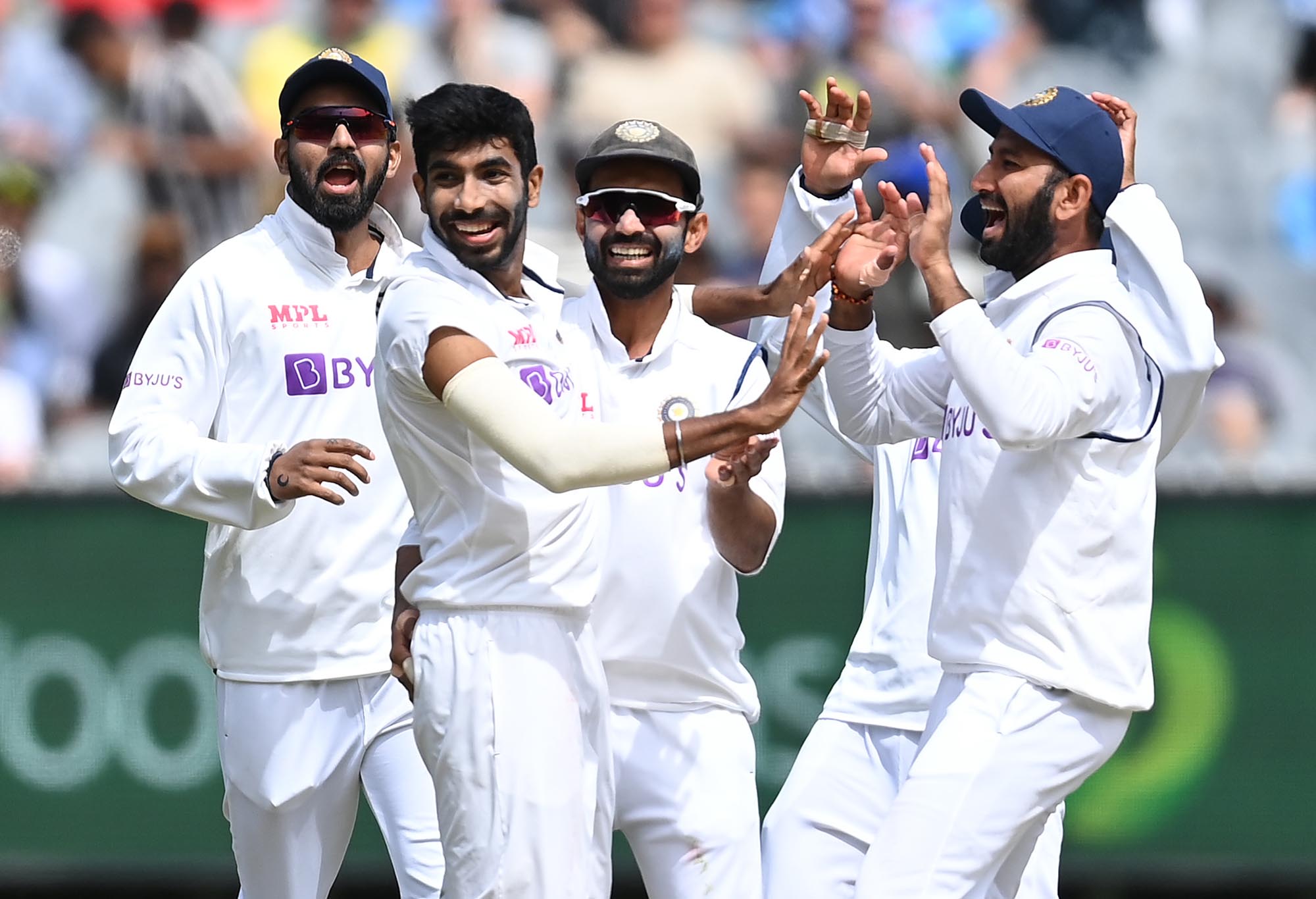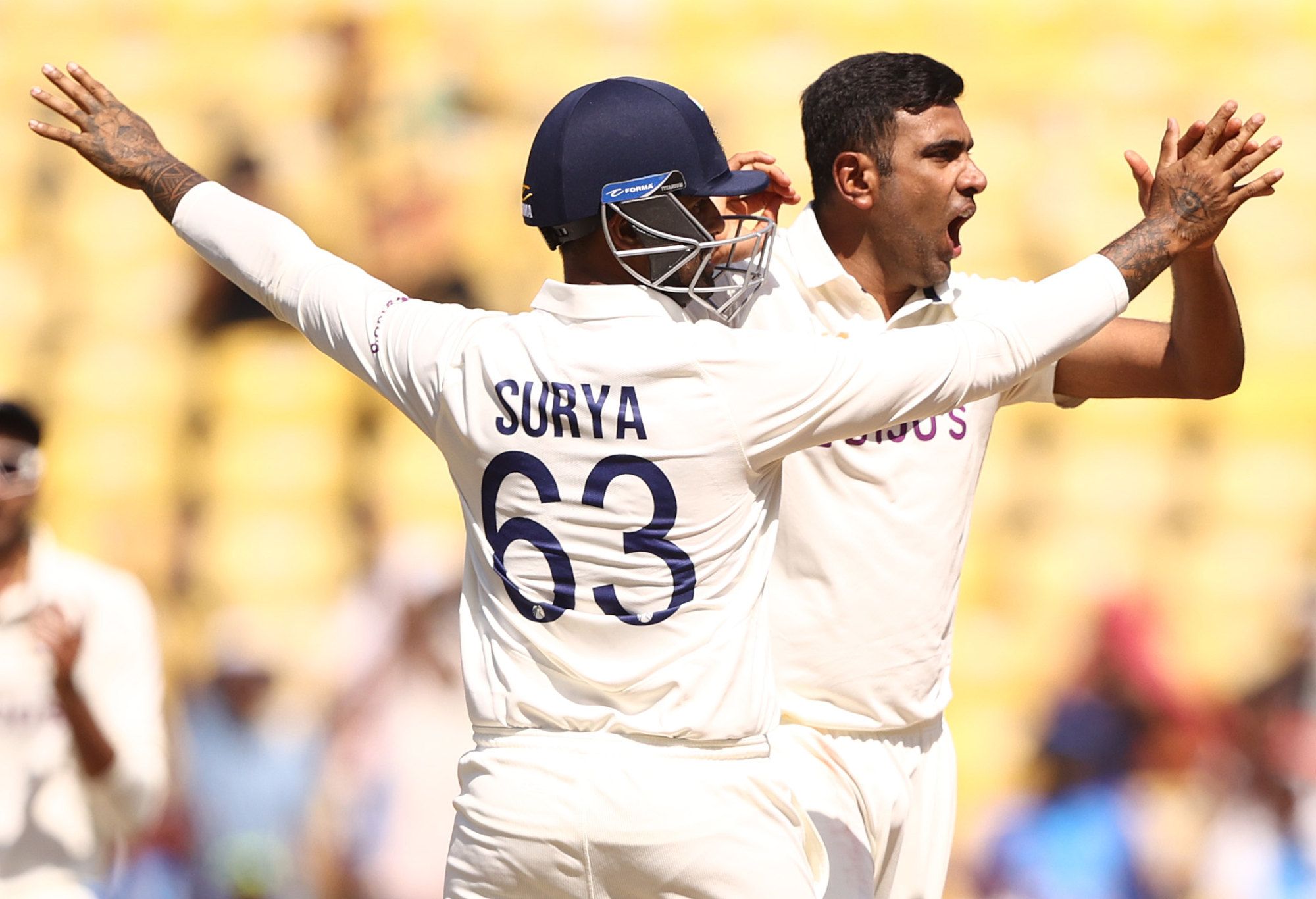Day five of the fourth Test has been put out of its misery early in the final session with any hope of a result long gone.
With Australia 2-175 and in front by 84 runs early in the final session, the match was called off early with India finishing 2-1 winners for the series, retaining the Border-Gavaskar Trophy.
The teams will meet again at The Oval in London on June 7 in the World Test Championship final after India qualified when Sri Lanka were beaten by New Zealand in Christchurch earlier in the day.
Travis Head’s 90 was the only on-field highlight on a dreary final day of the fourth Test, a match ruined by the benign pitch prepared for the contest which made it no contest between the batters and the bowlers with the bat dominating ball for the first time this series after raging turners kept scores low in the opening three matches.
Aussies favourites for rematch despite losing series
Australia will meet India again in much different conditions in the World Test Championship final but the English pitch doesn’t mean Pat Cummins’ team will be clear favourites.
The Indians advanced to the decider on Monday by virtue of Sri Lanka’s narrow loss in the cliffhanger against New Zealand in Christchurch after rain wiped out the first session on the final day.
While they won’t be on their beloved/tailored/doctored spinning home track, India are no longer shot ducks in foreign conditions.
Australian fans shouldn’t need reminding that India have won their past two Test tours Down Under while their recent record in England is a vast improvement on previous eras.
CLICK HERE for a seven-day free trial to watch the Tour of India on KAYO
India have gone 2-3 with one draw in their past six Tests in England. They lost 11 of their previous 14 up until 2018 with just two victories.
(Photo by Robert Cianflone/Getty Images)
One of the recent defeats was to New Zealand in the 2021 World Test Championship final which would have also been against Australia if not for a slow over rate penalty.
Seven of the Indian XI from this Test in Ahmedabad played in that eight-wicket loss to the Black Caps, including the top four batters.
They made just 217 and 170 in that match at the Rose Bowl in Southampton with all 20 wickets falling to New Zealand’s seamers – they didn’t even pick a spinner while India had Ravindra Jadeja and Ravichandran Ashwin, who only managed five scalps between them.
This year’s decider will be played at The Oval in London, where Australia have traditionally struggled even when they dominated Ashes series.
They’ve won just three of their past 14 matches at the venue, drawing six and losing five, including their most recent visit in 2019 when Jofra Archer took 6-62 as England won the Test to draw the series after the Aussies had already retained the urn.
India have suffered a blow with world-class seamer Jasprit Bumrah suffering a setback with his back injury and recent surgery now putting him in doubt for the ODI World Cup on home soil in October.

(Photo by Quinn Rooney/Getty Images)
Australia will have Pat Cummins back from personal leave and Josh Hazlewood should also be available after he also left the Border-Gavaskar Trophy tour early with an Achilles problem.
Australia will reverse their three spinners and a quick set-up from this tour but whether Hazlewood should get the nod ahead of Scott Boland is debatable.
Hazlewood has only played four Tests in the past two years due to a mix of injuries and spinning wickets while Boland has 28 wickets in his seven appearances at 13.42 despite going wicketless in the India tour opener in Nagpur.
Head getting nervous in 90s
Travis Head has been dismissed three times in the 90s over the past eight Tests.
He was bowled for 99 in Perth against the West Indies at the start of the summer, made a match-winning 92 on the Gabba greentop against South Africa and has now fallen for 90 on the final day of the India tour in Ahmedabad.
Head went on to reach his ton the four previous times he’d entered the 90s.
His 163-ball innings, featuring 10 fours and two sixes, was the only thing worth watching as the last day of the last Test lasted a lot longer than it needed to.
If it’s any consolation to Head, the 29-year-old left-hander has a long way to go to catch Michael Slater for the most 90s by an Aussie batter. He was out nine times within sight of a ton as he amassed 14 centuries in 74 Tests.
Slater was overtaken by Sachin Tendulkar for the most all time with the Indian legend dismissed 10 times in the 90s but when you hold the record for most Test hundreds with 51, it won’t be keeping him up at night too often.
Player of the series award a cop-out
Ravichandran Ashwin was named player of the series for his efforts with the ball. And so was Ravindra Jadeja.
After David Warner was named player of the series after Australia’s 2-0 win over South Africa on the strength of one good innings, you never can tell which way these awards are going to go with too much confidence.
And so it turned out to be with the judges deciding they couldn’t split Ashwin or Jadeja.
Australian opener Usman Khawaja was the leading run-scorer for the series with 333 at 47.57, with those numbers coming under the toughest of circumstances which have reduced some of the best batters on the planet to mere mortals.
The veteran opener, who missed the chance to add to his tally on the final day of the fourth Test due to a leg injury suffered while fielding on the boundary, was the only player to have passed 50 three times who went on to make a century.
More than half of his series tally came from his 180 on the only batter-friendly pitch in Ahmedabad – if he had scored slightly more in the first three Tests, he would have been the odds-on favourite to win player of the series.
Ashwin was the leading wicket-taker with 25 wickets at 17.28, striking at every 39.9 deliveries.
Jadeja bagged 22 at 18.86, with a strike rate of 43.9 and they both made decent contributions with the bat to stymie the Australian attack.
Australian off spinner Nathan Lyon also toiled hard for 22 scalps, adjusting his tactics after the first Test, averaging 22.56 and working hard for a wicket every 51.7 balls, including his 65-over marathon stint in the first innings of the final Test.

Ravichandran Ashwin. (Photo by Robert Cianflone/Getty Images)
Apart from Khawaja, it was Patel who was the only other player to raise the willow for a half-century three times, topping out at 84, to be the third-highest scorer with 264 at 88.
However, he only managed three wickets in four Tests, averaging 62, in his primary role.
Kuhnemann joins exclusive club of opening No.11s
Matt Kuhnemann may have played as an opener in the second innings but he was still treated like a tailender.
He was out for six early on the final day, given out LBW to Ravichandran Ashwin after he had fulfilled his nightwatchman role the previous evening.
The Queenslander asked Travis Head whether he should send the decision up to the third umpire but after the briefest of chats, kept walking to the Ahmedabad pavilion, not wanting to dare waste one of Australia’s three reviews.
Replays showed Ashwin’s arm ball from around the wicket would have missed the leg stump altogether.
Kuhnemann became the sixth player in Test history to open the batting and come in at No.11 in the same game.
In modern times, fellow left-arm spinner Jack Leach did likewise playing for England against Ireland in 2019 when used as an opening nightwatchman while South Africa skipper Graeme Smith went from the top of the order to the bottom in Sydney when he unsuccessfully tried to hold out for a draw with a broken hand a decade earlier.
English keeper Harry Butt was the first to complete the unlikely double on debut in South Africa in 1896 and Pakistani fast bowler Azeem Hafeez also did it in his first Test against India in 1983.
The other member of the top and tails club was New Zealand seamer Danny Morrison, who went out to hit the winning runs against India in 1990 when the Black Caps were chasing a target of just two runs to clinch victory in Christchurch.
He and fellow tailender Martin Snedden went out to bat and hit a single each to seal the 10-wicket win.





















Discussion about this post